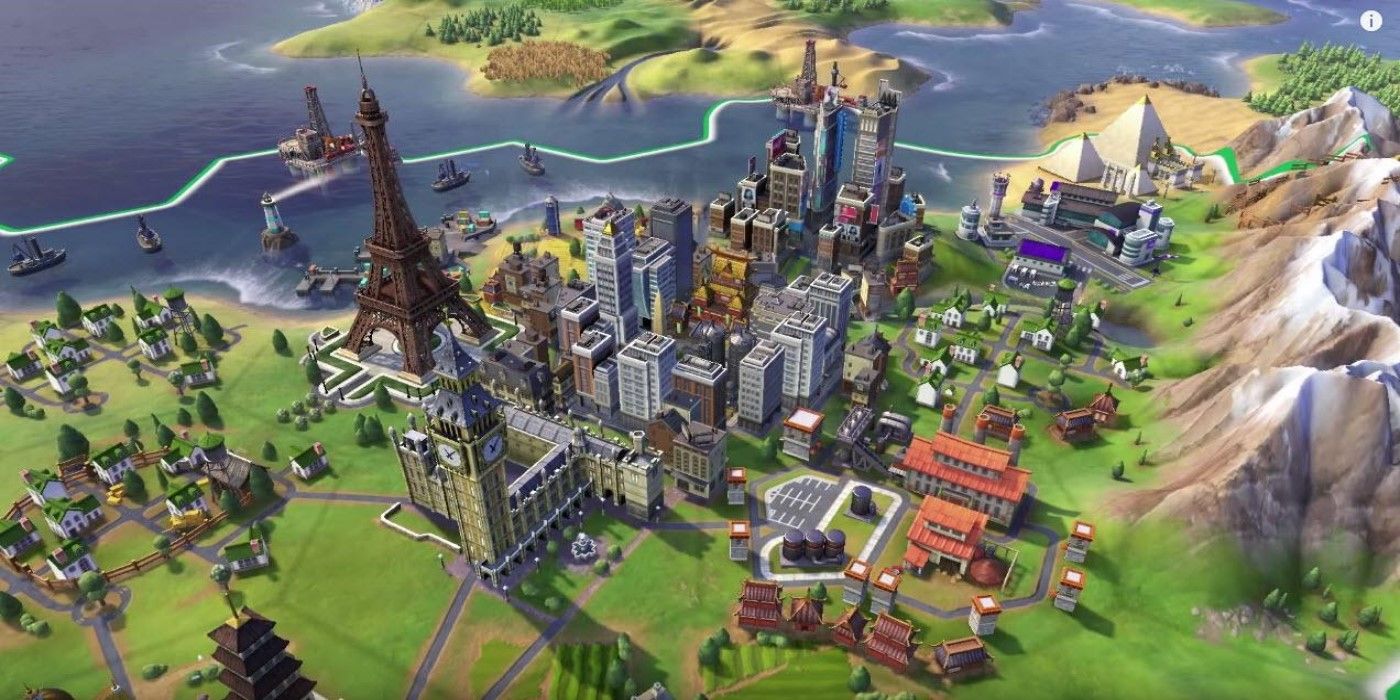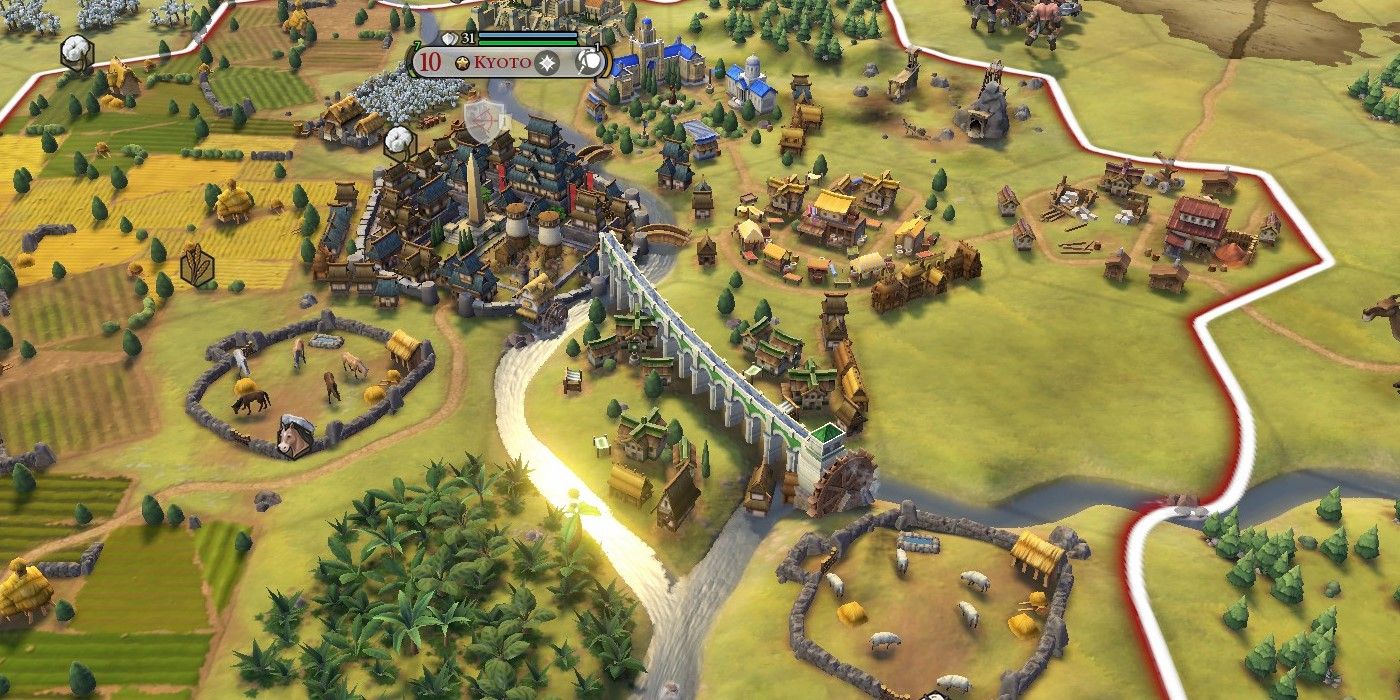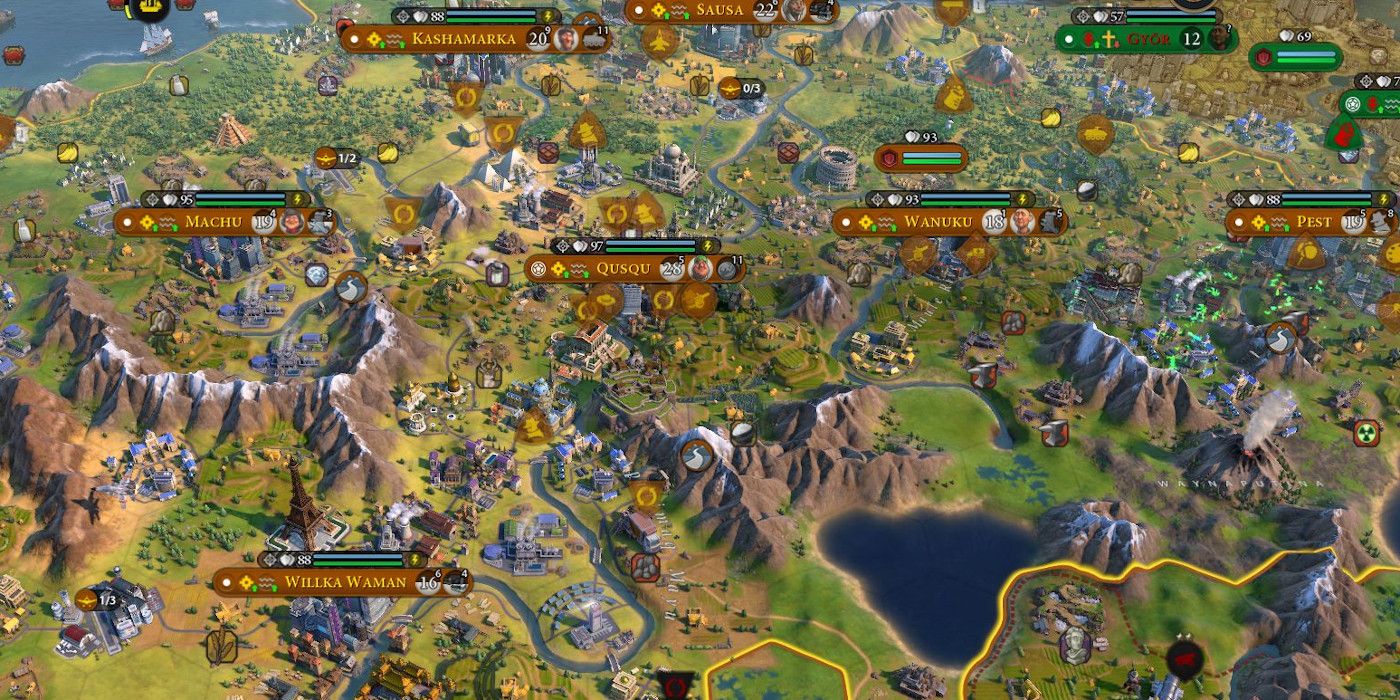Civilization 6 is the latest title in the long-running historical strategy series, and brings many changes to its classic formula. Probably the most important of these new mechanics in Civ 6 is the District system.
In previous titles, cities were pretty much confined to a single tile, although they did allow the space around them to be developed into farms and mines. In Civilization 6 the tiles of a city have become much more important, as Wonders and specialized Districts now take up a whole tile each. But which Districts should be prioritized, and which can be delayed?
Tier 1 Districts
These Districts are the core of building a strong empire, and a few of each should be built no matter which kind of victory a Civ is aiming for.
Campus: The science District, the Campus helps a civilization make its way along the tech tree with adjacency boosts, buildings, and Great Scientists. As so much of the game is gated behind these Technologies, having low science often makes other victories much harder to achieve.
Theater Square: Similar to the Campus, the Theater Square allows players to quickly move along the Civic tree, with all the bonuses that entails. While only essential for a Culture victory, Theater Square should never be ignored.
Commercial Hub: A healthy flow of Gold can lead to a powerful and versatile civilization, and the Commercial Hub's bonuses are key to earning that wealth. Giving bonuses to Gold, Trade, and Great Merchants, the Commercial Hub will give a player the spending power needed to advance their Empire, or respond to new threats.
Industrial Zone: Production is one of the staples of a city's output, and the Industrial Zone allows players to significantly boost their building speed. While Gold is more useful for quick spending, Production is far more efficient when it comes to long term growth.
Tier 2 Districts
The Districts in this tier are all useful and powerful in their own way, but are often somewhat-situational, or come with downsides that need to be considered.
Government Plaza: A difficult District to classify the effectiveness of, the Government Plaza unlocks the construction of several powerful buildings, as well as boosting Loyalty. While each of the buildings can be very effective for certain Leaders, they often become less useful over time.
Holy Site: The core of a Religious Victory, the Holy Site allows a player to start earning Great Prophet points, as well as being a major source of Faith. Civs focusing on Religion should consider having a Holy Site in every city is almost mandatory, though others can safely ignore it.
Harbor: Providing many of the same benefits as the Commercial Zone, the Harbor can only be built on coast tiles. It also gives a benefit to the production of naval units, and contains buildings that boost fishing boat improvements.
Encampment: A game-changer on the front-lines, or for churning out veteran units for a warlike Civ, the Encampment can nevertheless be safely ignored by cities safe from invasion.
Neighborhood: While a Neighborhood is often essential for a city to reach its full potential in the late-game, it relies on having appealing tiles to be worthwhile. The Neighborhood also introduces a worrying weakness by allowing enemy spies to incite rebellions.
Aerodrome: Allows a city to produce aircraft, which are a staple of late-game combat. Useful when built near a tense border, but not a priority if its function is unlikely to be necessary.
Tier 3 Districts
The Districts in this list are those that can be completely ignored under certain situations, and should only be built over others when their very specialized purpose is required.
Entertainment Complex: In a game with plentiful Luxury Resources on offer, or plenty of allies willing to trade them, the Amenity boosting Entertainment Complex is often superfluous. It's usefulness grows the more that these things are limited.
Aqueduct: The Aqueduct provides the fresh water Housing bonus to cities that wouldn't normally qualify for it, but can only be built between that city and a fresh water source or mountain. In a city that already has fresh water the Aqueduct is rarely worth building.
Dam: Providing a small amount of Housing and preventing the flooding of rivers, the Dam is useful only in cities that suffer from a lot of floods.
Canal: The Canal allows bodies of water to be connected across land, which can provide a strategic advantage in very specific situations. It also gives gold for each trade route that passes through it.
Water Park: The Water Park mostly serves the same purpose as the Entertainment District, but can be built on water. This gives it an edge in coastal cities, as it doesn't compete with other Districts for space.
Spaceport: Essential for players who are going for a Scientific victory, but completely pointless for everyone else.
Civilization 6 is available now on PC, PS4, Switch, and Xbox One.



